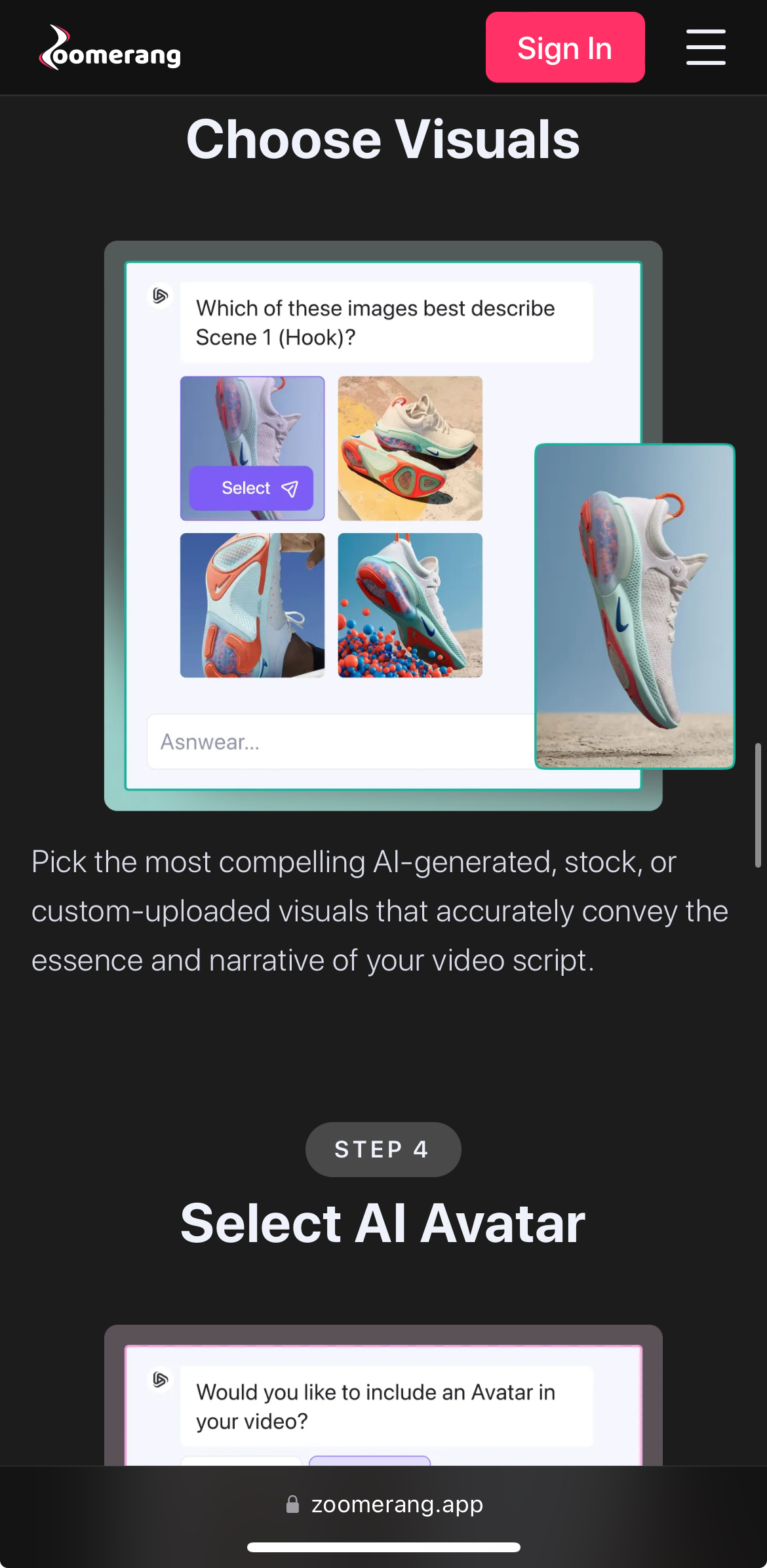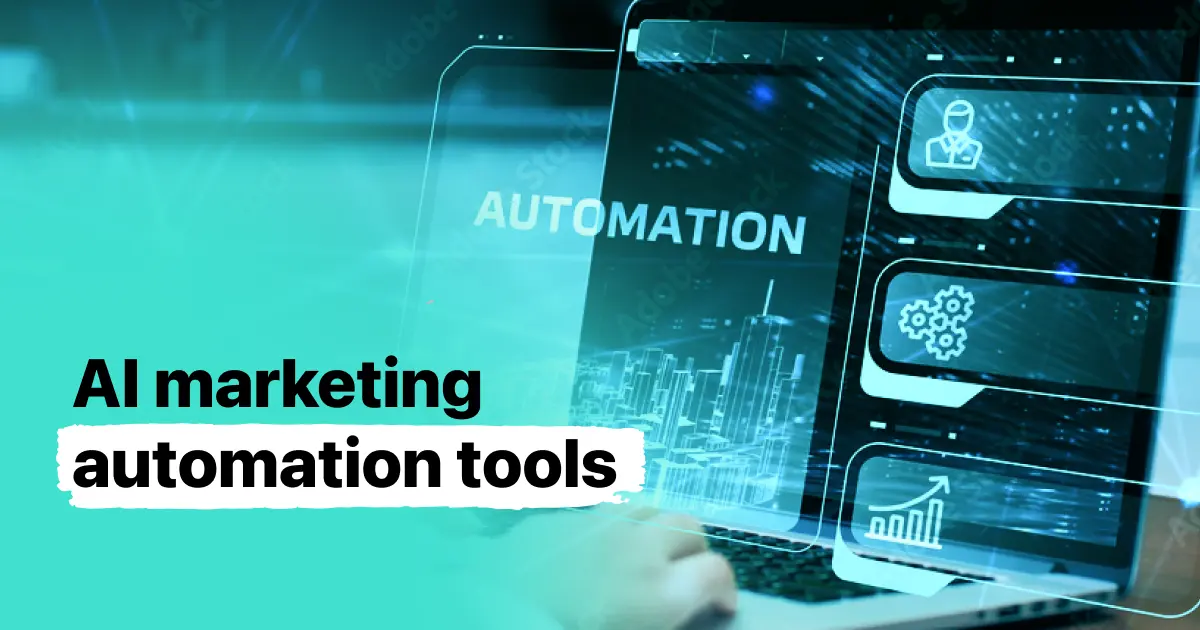Plans built for businesses
Pro + AI
For pro video creation
Advanced + AI
For users who want to generate video ads
*Billed yearly
Compare plans
How Does Video Marketing Work in the Age of AI?
19 July, 2024
Any successful marketing strategy must include video marketing. The power of visual content to capture attention, convey complex information, and connect emotionally with audiences is unparalleled.
As artificial intelligence continues advancing, it is revolutionizing how video marketing is done, making it more efficient and effective than ever before.
This article will delve into the intricacies of video marketing, exploring what it entails, the types of video content used, and a typical video marketing strategy.
What is Video Marketing?
Video marketing is a dynamic and influential strategy that leverages visual content's power to achieve various marketing goals. At its core, video marketing involves creating and sharing videos that promote and market products or services, but its impact extends far beyond simple promotion. Here’s a deeper look into what video marketing encompasses and why it is so effective:
Engaging and Captivating Audiences
Videos have an unparalleled ability to capture and hold the viewer's attention. With the combination of visual and auditory elements, videos can convey messages more effectively than text or static images alone. This multisensory experience makes it easier for audiences to absorb and retain information.
Driving Higher Engagement Rates
One of the primary reasons marketers favor video content is its ability to drive higher engagement rates. Videos are more likely to be shared, liked, and commented on than other content types. This increased engagement can lead to a wider reach and greater brand visibility as users share video content with their networks.
Enhancing Conversion Rates
Video marketing is not just about engagement; it also significantly enhances conversion rates. Videos can effectively showcase product features, demonstrate use cases, and provide testimonials, all of which help in building trust and persuading potential customers to make a purchase.
Educating Consumers

Videos are an excellent medium for educating consumers about products or services. Explainer videos, how-to guides, and educational content can simplify complex concepts and provide valuable information in an easily digestible format. This educational approach not only informs the audience but also positions the brand as an authority in its field.
Strengthening Brand Connection
Video content can create an emotional connection with the audience. Through storytelling, brands can convey their values, mission, and personality, making them more relatable and memorable. Emotional connections are crucial for building brand loyalty and fostering long-term relationships with customers.
Adapting to Multiple Platforms
One of the significant advantages of video marketing is its versatility across multiple platforms. Whether it’s social media channels like Facebook, Instagram, and TikTok, video-sharing platforms like YouTube, or even embedded on websites and blogs, videos can be tailored to fit various formats and audiences. This adaptability ensures that video content reaches a broad and diverse audience.
Boosting SEO Efforts

Search engines love video content. Including videos on your website can improve its SEO performance, as videos increase the time visitors spend on your site and reduce bounce rates. Additionally, video content is more likely to be shared and linked to, which further enhances your site's search engine rankings.
Measuring Success with Analytics
Video marketing allows for detailed tracking and analytics. Marketers can measure a video's performance through metrics such as views, watch time, engagement, click-through rates, and conversion rates. This data provides valuable insights into what works and what doesn’t, enabling continuous optimization of video marketing strategies.
Staying Competitive
In today’s competitive market, video marketing is no longer a luxury but a necessity. Businesses that do not incorporate video into their marketing strategies risk falling behind. With the increasing consumption of video content, staying competitive means meeting the audience where they are and how they prefer to consume information.
Adapting to Changing Consumer Behaviors
Consumer behaviors and preferences are constantly evolving, and video marketing is well-suited to adapt to these changes.
As more people use mobile devices and spend time on social media, short-form videos, live streams, and interactive content have become increasingly popular. Video marketing allows brands to stay relevant by catering to these changing trends and preferences.
Overall, video marketing is a multifaceted approach that not only promotes products and services but also engages, educates, and converts audiences.
Its ability to create a strong emotional connection, drive high engagement and conversion rates, and adapt to various platforms makes it an indispensable tool in the modern marketer’s arsenal.
Types of Video Content Used in Marketing
There are various types of video content that marketers use to achieve their goals. Some of the most popular types include:
-
Explainer Videos: Short videos that explain a product or service in a simple and engaging way.
-
Product Demos: Videos showcasing the features and benefits of a product.
-
Customer Testimonials: Videos featuring satisfied customers sharing their positive experiences.
-
Educational Videos: Content designed to educate the audience about a particular topic.
-
Live Videos: Real-time videos that allow for live interaction with the audience.
-
Social Media Stories: Short, ephemeral videos used on platforms like Instagram and Snapchat.
-
Animated Videos: Animated content used to simplify complex topics or ideas.
Demonstration of a Typical Video Marketing Strategy
To understand how video marketing works, it is essential to look at a typical video marketing strategy. Here are the key steps involved:
Define Goals and Objectives
The first step in any video marketing strategy is to define clear goals and objectives. What do you want to achieve with your videos? Common objectives include increasing brand awareness, driving traffic to a website, generating leads, or boosting sales.
Understand Your Audience
Knowing your target audience is crucial for creating relevant and engaging video content. Conduct market research to understand your audience's preferences, pain points, and behaviors. This information will guide the content creation process.
Plan Your Content
Once you have a clear understanding of your goals and audience, it's time to plan your content. This involves deciding on the types of videos you will create, the key messages you want to convey, and the platforms where you will distribute your videos.
Create High-Quality Videos
Creating high-quality videos is essential for capturing and retaining your audience's attention. This involves writing compelling scripts, filming, and editing. Depending on your budget and resources, you can either do this in-house or hire a professional production company.
Optimize Your Videos
Optimization ensures that your videos reach the maximum number of people. This involves using relevant keywords in your video titles, descriptions, and tags. Additionally, creating engaging thumbnails and including strong calls-to-action can enhance your video's performance.
Distribute Your Videos
Once your videos are ready, it's time to distribute them across various platforms. This includes your website, social media channels, email newsletters, and video-sharing platforms like YouTube and Vimeo. Tailor your distribution strategy to your audience's preferences and habits.
Monitor and Analyze Performance
Monitoring and analyzing the performance of your videos is critical for understanding what works and what doesn't. Use analytics tools to track metrics such as views, engagement, click-through rates, and conversions. This data will help you refine your strategy and improve future videos.
Example: Nike's "Dream Crazy" Campaign
An excellent example of a successful video marketing strategy is Nike's "Dream Crazy" campaign, featuring Colin Kaepernick.

-
Define Goals and Objectives: Nike aimed to reinforce its brand identity as a champion of social justice and to increase brand loyalty among its target audience.
-
Understand Your Audience: Nike conducted extensive market research to understand that their audience values brands that take a stand on social issues.
-
Plan Your Content: Nike planned a series of inspirational videos highlighting athletes who overcame significant challenges, with Kaepernick as the focal point.
-
Create High-Quality Videos: The videos were professionally produced, featuring high-definition visuals, compelling storytelling, and emotive music to engage viewers.
-
Optimize Your Videos: Nike used relevant keywords and hashtags related to social justice and sports. The thumbnails and video titles were crafted to provoke curiosity and engagement.
-
Distribute Your Videos: The campaign was rolled out across multiple platforms, including TV, YouTube, and social media channels like Instagram and Twitter, ensuring maximum reach.
-
Monitor and Analyze Performance: Nike closely monitored the campaign's performance, tracking metrics like views, shares, comments, and the impact on brand sentiment. This data helped Nike fine-tune their future marketing strategies and campaigns.
By following these steps, Nike was able to create a powerful and impactful video marketing campaign that resonated with their audience and achieved their marketing objectives.
How Does AI Impact the Process of Video Marketing?
The advent of AI has significantly impacted the way video marketing is conducted, making it more efficient and accessible. One such AI tool that is transforming video marketing is Zoomerang AI.
Zoomerang AI: Revolutionizing Video Marketing

Zoomerang AI Chat is an innovative tool designed to simplify and expedite the video creation process. By leveraging AI technology, it ensures that marketers can produce high-quality, engaging videos within minutes. Here’s how it works:
1. Effortless Video Editing
Zoomerang AI Chat eliminates the need for manual video editing, which can be time-consuming and require specialized skills. By engaging with the tool and sharing your preferences for editing, you can receive a professionally edited video quickly and easily. This allows marketers to focus more on strategy and content creation than video production's technical aspects.
2. AI-Powered Script Generation

One of the standout features of Zoomerang AI is its VideoGPT capability. This feature allows users to describe the type of video they want—whether it’s a demo, ad, or social media reel—and VideoGPT generates a script based on these preferences. This not only saves time but also ensures that the script is optimized for engagement and effectiveness.
3. Visual Selection and Guidance

Zoomerang AI offers a unique feature where users can choose visuals in the form of mood boards. These visuals guide VideoGPT further, helping it create a basic video structure that aligns with the user's vision. This integration of visual elements ensures that the final video is cohesive and visually appealing.
4. Cost-Effective Solution
For marketers looking for a cost-effective solution, Zoomerang AI offers competitive pricing. VideoGPT starts at $39.99 for 50 credits, which equates to 10 videos. This pricing model makes professional video production accessible to businesses of all sizes without the need for extensive budgets.
Benefits of Using Zoomerang AI
-
Time Efficiency: Traditional video editing can take hours, if not days. Zoomerang AI drastically reduces this time, allowing for quick turnaround times.
-
Professional Quality: Despite the speed, the quality of the videos remains high, ensuring that they meet professional standards.
-
User-Friendly: The AI interface is designed to be intuitive, making it easy for users with little to no video editing experience to create high-quality videos.
-
Scalability: With Zoomerang AI, businesses can scale their video production efforts without the need for additional resources or staff.
Conclusion
In the age of AI, understanding how video marketing works is crucial for businesses looking to stay competitive in the digital landscape. Traditional video marketing strategies involve a series of steps, from defining goals to analyzing performance, each requiring careful planning and execution. However, the introduction of AI tools has revolutionized this process, making it more efficient and accessible.
Whether you are a small business or a large corporation, leveraging AI tools like Zoomerang AI can help you achieve your marketing goals more efficiently and effectively.
By embracing these technological advancements, businesses can ensure that they remain at the forefront of digital marketing, delivering compelling video content that resonates with their audience and drives success.








